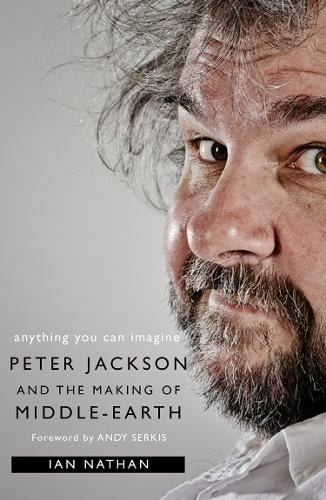Book review: Anything you can imagine - Peter Jackson and the making of Middle Earth, by Ian Nathan7/5/2021 I can vividly remember the first time I watched The Fellowship of the Ring – in a packed cinema, with an excited and expectant audience. I’d been counting down the weeks, the days, the hours to the opening of the film. I’d long been a huge admirer of J.R.R. Tolkien’s work, and a trilogy of films based on The Lord of the Rings was something I’d dreamed of for years. However, my excitement was tempered by a twinge of trepidation – surely no film could truly capture the depth of Tolkien’s epic, surely no-one could bring Middle-Earth to life on the screen? Well, with Frodo and friends in Peter Jackson’s safe hands, I need not have feared. Like millions of others, I was enthralled by The Fellowship of the Ring – a film beautifully designed and superbly acted, with moments that chimed perfectly with the book, such as the bucolic Shire, the fearsome Black Riders and the film’s (arguably the trilogy’s) highlight sequence, the Mines of Moria, especially the mighty Balrog. As soon as The Fellowship of the Ring ended, I wanted to see it again, and of course, looked eagerly forward to seeing The Two Towers and The Return of the King, both of which proved to be sublime cinematic achievements in their own right. Anything you can imagine tells the story of how these wonderful films came to be made, and it is a fascinating tale. The book gives insights into the lengthy and complex creative process, as well as the Byzantine twists and turns of the film industry. The journey of the film from Peter Jackson’s and Fran Walsh’s initial idea of adapting The Lord of the Rings to the final, final green light for the project is deeply interesting, a winding route encompassing King Kong, Miramax and the Weinstein brothers (shudder), to the dramatic intervention of New Line Films, and their bold, unprecedented decision to make three films back-to-back. It almost reads like a thriller and one can only admire the tenacity of Jackson and his colleagues to bring the project to fruition where surely many others would have given up.
Nathan also superbly tracks the fascinating ascent of Peter Jackson from maverick, self-taught director of low budget splatter films, through to the blossoming of his talent in pictures such as Heavenly Creatures, to eventually becoming one of the world’s most successful movie-makers. Once the book moves into the nuts and bolts detail of actually making The Lord of the Rings film, I found it lost a little of its focus and strong narrative, but it always remains highly readable and reflects the enormous challenges and sheer scale of creativity involved in bringing the films to life. From the groundbreaking special effects (such as the MASSIVE software used to help portray the epic battles, and the creation of Gollum), the stunning sets, and the music of Howard Shore, truly one of the great triumphs of the film trilogy, the scale of what was accomplished, often pushing film-making into new areas, becomes clear. Peter Jackson is the conductor of this great orchestra, but Nathan rightly makes sure credit is given to the many others, especially his redoubtable fellowship of Kiwi collaborators, who surmount problem after problem, refuse to submit to the project’s many naysayers, and doggedly drained every last ounce of creativity and energy to make the best possible version of Tolkien’s masterpiece. The book treads more lightly on the generally less-loved The Hobbit trilogy, but gives an absorbing insight into the legal, logistical and creative issues in the troubled gestation and production of these films. And for all the flaws of The Hobbit trilogy, and I confess they leave me a little cold, Nathan rightly acknowledges their successful elements, such as the performances of Martin Freeman and Ian McKellen, the often stunning visuals, and the memorable depiction of Smaug. It’s difficult to imagine a more daunting cinematic journey to document than The Lord of the Rings trilogy, but Nathan succeeds with flair and humour, and his passion for these films, and for cinema in general, shines through on every page. I’d strongly recommend Anything you can imagine for anyone interested in The Lord of the Rings films or just in movie-making in general. And having read this book, I now want to watch and enjoy all three films (extended editions, of course) all over again…
1 Comment
|
Archives
October 2023
Categories
All
|

 RSS Feed
RSS Feed